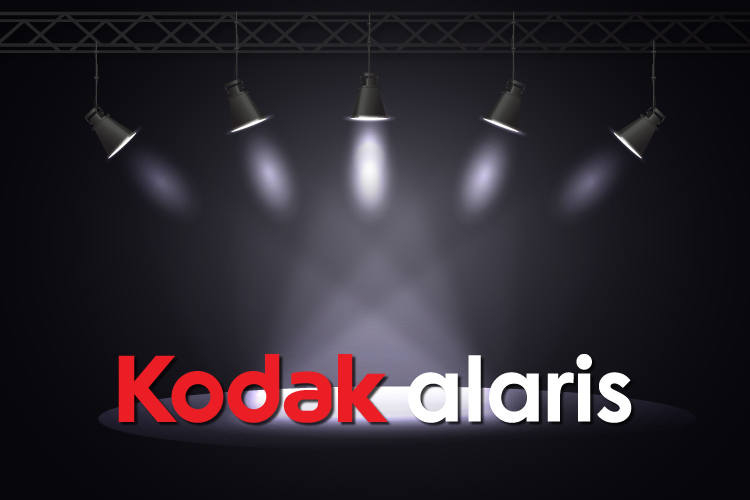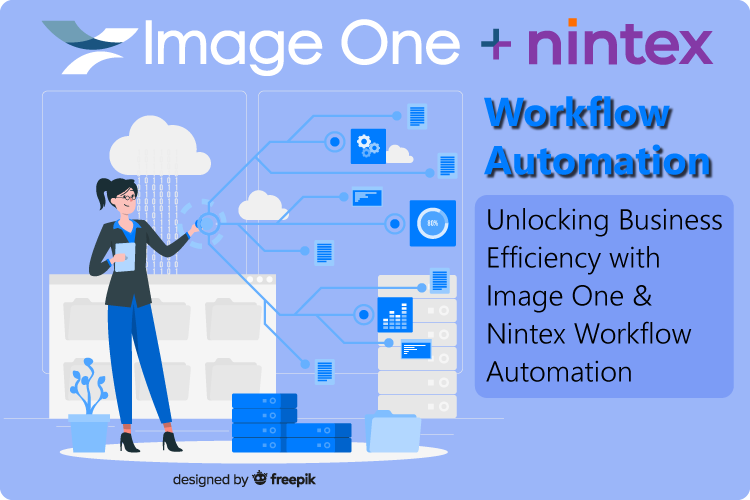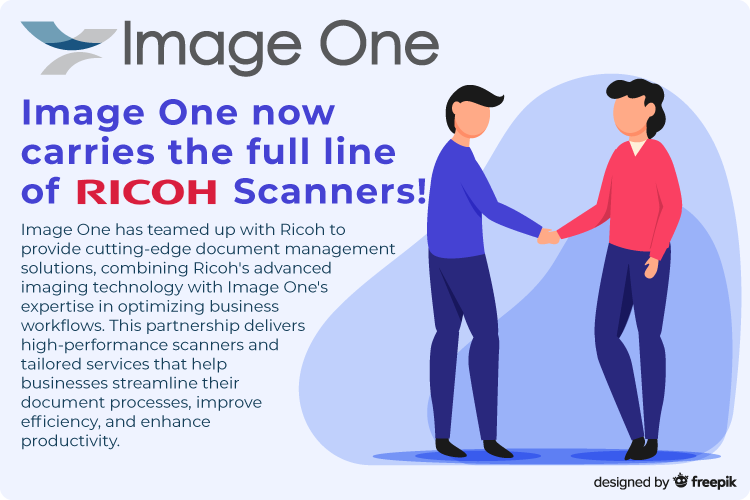Document Scanning Best Practices: Capture & Indexing
Monday, January 16, 2017As part of our Document Scanning Process Best Practices series, this blog post covers the core of the process: the physical scanning of documents and indexing of the resulting PDF and TIFF document images.
Scanning is a dirty, time consuming and physically demanding process. We’ve seen many nightmare scenarios when organizations try to save money by using interns or clerks to scan high volumes with desktop scanners, or use an outsourcing provider that isn’t experienced.
Using an experienced document scanning partner to perform the scanning and indexing properly for large volumes is the best way to avoid the “garbage in, garbage out” effect – and will save you a lot of headaches in the process.
Document Capture & Scanning
Image One currently uses industry leading document capture software as our front-end capture (scanning) sub-system. The software can read barcodes and/or use optical recognition (OCR) documents to automate indexing and to store images in batches until they can be processed further. Index values can also be manually keyed into the software.
Document Sizes & Scanners
Image One scans all business-sized or “small format” documents (including 8.5″ x 11″, A4, legal, 11″ x 17″, A3, and anything smaller) using high-speed production document scanners from Kodak and Canon. All large format documents will be scanned using specialized large format scanners.
Batching, Settings & Image Enhancement
All scanners are connected to the our document capture software, which allows files to be scanned in batches and facilitates combining small and large format images into the same scanned document file when required. All documents will be scanned into a TIFF or PDF file format at a resolution of 300 dots per inch, which is the minimum standard for OCR and municipal government documents. All small format documents will be scanned as double-sided (duplex) and all blank backsides will automatically be deleted (using blank page deletion) and not be included in document scanning counts.
Optimal image quality will be insured by using image enhancement software that comes standard on all of the high-speed production scanners that we use. Any resulting images that are not deemed acceptable by a visual inspection will be re-scanned after adjustments have been made to the scanner.
Batch Counts, QC & Reconciliation
At the scan station, the scanner operator will enter the batch number and the document count from the batch header sheet and proceed with scanning. When the batch is completely scanned, the document capture software will notify the scan operator if the document count entered into the software does not match the number of pages that were scanned. These counts will be reconciled before the electronic batches go on to the indexing step.
Reconciliation will involve recounting the pages in the batch for a second time. If correct, each new document recognized will be viewed and compared to the hardcopy until the missing document sheet is found and recognized. The scanner operator will initial the batch header sheet. The scanned batches will be replaced in the box and a sticker signifying that they have been scanned will be placed on the box. The electronic batches will automatically be forwarded to the indexing area.
Document Indexing
After your documents have been scanned, the electronic batches of images will be opened and each file will be identified by indexing fields (a.k.a. metadata) that describe the document and make it easy to search and retrieve a document later. Whatever is not captured automatically with barcodes and OCR can be manually entered.
For invoices, indexing fields can include invoice number, invoice date, vendor name, vendor ID, PO number, and possibly line item information.
For student or medical records, index fields can include the student/patient ID, name, date of birth, social security number, etc.
For insurance claims, index fields can include a document number or locator number, document control number, image control number (unique claim number) in addition to all patient information as with medical records.
Next Steps
For over 20 years, Image One has scanned a wide variety of document types for organizations throughout Florida from our Tampa and Orlando service bureaus and onsite at client locations. Over that time, we’ve optimized the document scanning process from pickup through scanning and QC to destruction.
Isn’t time you got rid of your paper? Request a quote from Image One today and you may find that your document scanning project may not be as large and as costly as you think, as we can help you determine what should be scanned, what shouldn’t and what can be destroyed today.
Contact us to learn more about our document scanning services today




